Religion
Culture
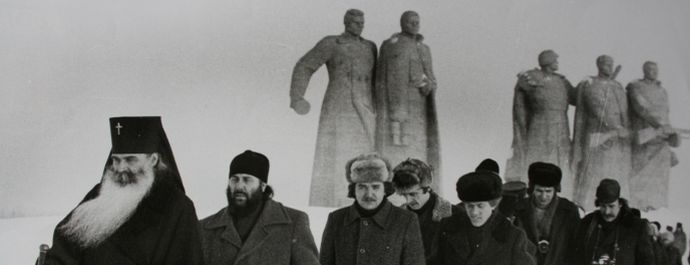
The Socialist states could hardly have been described as welcoming to religions. In Marxist theory, the “opium of the people,” justified bourgeois social order, and played an alienating or mystifying role on the masses. This led to the persecution of different religions, Christian, Muslim and Jewish (et Juive, j’aurais rajouté, non ?), first in Bolshevik Russia, and then in the Eastern-bloc countries after 1945. And yet, the Socialist states didn't simply liquidate the Churches, whether it was out of fear of getting the population’s back up by brutally breaking with age-old traditions to which they were very attached, or out of a desire to exercise control of the congregations. Thus in the USSR, from 1923 onwards, while so-called “undesirability laws” legalized massive deportations of clergymen, the GPU (State Political Directorate) aimed to weaken Orthodoxy from within, by fomenting a schism movement known as the “Renovated Church,” attempting to infiltrate the synod, and arresting dissident bishops. Outside the scope of official institutions, a clandestine religious life continued under Communism. This surprising continuity of religious practice can be seen as an antidote to the prevailing totalitarianism: the Churches may have appeared as the one place where one could still act and think freely, thereby offering a structured “counter-culture” to those who opposed Communism. In the 1970s, there was even a vigorous religious revival in Lithuania and Poland, as well as lesser ones in Rumania, Czechoslovakia, Hungary and even Bulgaria and Albania. Since 1989, the nationalist movements that have unfurled in the post-Communist states have been accompanied with the growth of an identity-defining “religious heritage” movement. We can also affirm that in some countries, religious sentiment has filled a vacuum created by the disappearance of Marxist-Leninist thought.
Archive
Monks from the Potchaievsky Monastery (Ukraine), who had actively participated in World War II.
From 1917 to 1940 in Bolshevik Russia, 75,000 places of worship were destroyed and 600 bishops, 40,000 priests and 120,000 monks sent to camps.
country: Soviet Union / year:
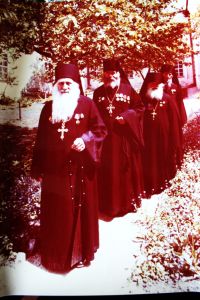
From 1917 to 1940 in Bolshevik Russia, 75,000 places of worship were destroyed and 600 bishops, 40,000 priests and 120,000 monks sent to camps. At the time of the German invasion, during the Second World War, faced with a rout, Stalin nevertheless called upon the Church and promised a partial renaissance in exchange for “absolute loyalty.” The persecution started up again under Khrushchev, in 1959.
Pilgrimage of the Black Virgin in Czestochowa
Since many places of worship were closed or destroyed by Communist authorities, true believers had to adapt
country: People's Republic of Poland / year:
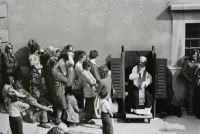
Since many places of worship were closed or destroyed by Communist authorities, true believers had to adapt, e.g. by improvising this confessionnal in Czestochowa, Poland in 1976, to a pilgrimage site dedicated to the Black Virgin.
Activists from the "Kirche Von Unten" (The Church from Below) movement.
Starting in 1987, several actions bore witness to the opposition movements’ increased determination and combativeness, particularly Christian ones.
country: German Democratic Republic / year:
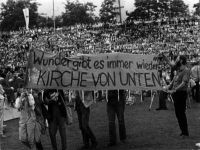
Starting in 1987, several actions bore witness to the opposition movements’ increased determination and combativeness, particularly Christian ones. These included the protest vigil against police intervention at the Temple of Zion in East Berlin in November and the demonstration organized by the “Kirche Von Unten” (“The Church from Below”) movement, Friedrich Schorlemmer, a former priest from East Germany, participated in founding. He later joined Democratic Awakening, one of the two main opposition movements that sprung up in the fall of 1989.
A muezzin calling to prayer (adhan) in Baku Azerbaijan.
From the 1920s to 1989, Soviet authorities treated both Islam and Orthodoxy as no more than cultural traditions, imposing drastic conditions and strict limitations on them.
country: Soviet Union / year:
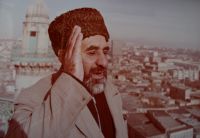
From the 1920s to 1989, Soviet authorities treated both Islam and Orthodoxy as no more than cultural traditions, imposing drastic conditions and strict limitations on them. This turned all practicing believers into potential suspects or non-citizens. Yet the authorities were never able to entirely eradicate semi-religious/semi-cultural acts, like this adhan from the minaret of one of Baku’s mosques.
Atheism class for children
From 1917 countless places of worship in the Soviet Union were either destroyed or turned into movie theatres, factories or warehouses.
country: Soviet Union / year:
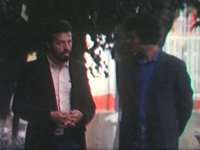
From 1917 countless places of worship in the Soviet Union were either destroyed or turned into movie theatres, factories or warehouses. The point was to free the masses from their “opium” in the name of a state-sponsored atheism taught from a young age.
Pope John-Paul II on Victory Square in Warsaw, during his first official voyage to Poland.
Despite state harassment, the Church’s influence grew – as did its role in creating national unity – in Poland in the 1970s.
country: People's Republic of Poland / year:
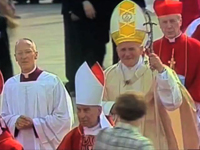
Despite state harassment, the Church’s influence grew – as did its role in creating national unity – in Poland in the 1970s. The voyages of the new Polish pope, John-Paul II, encouraged this trend. His famous “Do not be afraid” message, pronounced during his first papal address, on October 22, 1978, resonated throughout Poland like a veritable order. “You must carry into the future the whole of the experience of history that is called "Poland" the Pope advised, in June, 1979, once again, to the crowds in Krakow. “Do not be afraid of the toil! Be afraid only of thoughtlessness and pusillanimity!” MUTE
Stasi Film: people entering and leaving a church in East Berlin in 1988.
Despite persecution of the clergy and the occasional definitive closing of places of worship, religious life went on, even offering an antidote to the prevailing totalitarianism.
country: German Democratic Republic / year:

Despite persecution of the clergy and the occasional definitive closing of places of worship, religious life went on, even offering an antidote to the prevailing totalitarianism. The authorities weren’t fooled, and they perceived a form of dissidence in the continuation of religious practice. Therefore, places of worship were placed under strict police surveillance, which was usually carried out by the STASI, the East German secret police. MUTE
Assembly for freedom of speech in a church in East Berlin in 1989.
Protestant churches in East Germany had signed a Concordat with the Communist regime
country: German Democratic Republic / year:
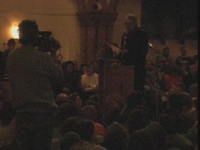
Protestant churches in East Germany had signed a Concordat with the Communist regime, so they kept their distance from any dissident movements for many years. But by 1987, several actions bore witness to an increased determination and combativeness on the part of the opposition movement, which was making headway within the clergy. This bishop’s call for the population to exercise its freedom of speech is a clear example of religious authorities tipping over the line towards political resistance.
Baptisms and religious life during Perestroika
Soviet authorities considered believers as marginally suspect
country: Soviet Union / year:
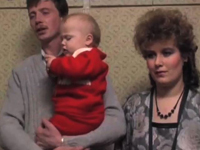
Soviet authorities considered believers as marginally suspect, which explains, among other things, why parents were afraid to have their children baptized. The persecution and harassment didn’t entirely prevent religious practice from being perpetuated, although it was forced to become clandestine or limited to within the family.